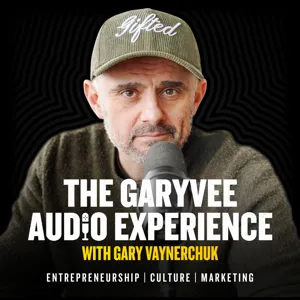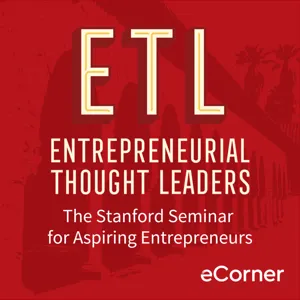Podcast Summary
Overcoming Unexpected Challenges in Podcasting: Despite unexpected challenges, focus on creating authentic and original content to thrive in podcasting.
Despite unexpected challenges, such as guests bailing last minute or content being copied, the podcast continues to thrive through the dedication and creativity of its hosts and guests. Jake Laser, a last-minute addition to the podcast, shared his long-standing experience in creating content and the history of past bullying he experienced due to similarities in projects. Although some may imitate or copy content, the focus should remain on creating authentic and original content, rather than getting bogged down by negativity or competition. The podcast, like its hosts, continues to adapt and move forward, embracing new opportunities and guests.
Importance of collaboration and respect in creative projects: Collaboration and respect are crucial in creative projects to avoid feelings of exploitation and disrespect. Growth and improvement are essential for success, even after negative experiences.
Collaboration and respect are essential in creative projects. The discussion revolves around a situation where one creator's work was imitated without proper credit. The omission of credit led to feelings of exploitation and disrespect. The creators involved could have collaborated to create something more authentic and respectable. Instead, the situation became a source of frustration and embarrassment. However, the conversation also highlighted the impressive achievements of the creator whose work was imitated. Their recent projects have been successful, with several videos reaching over 10 million views. Despite the negative experience, the importance of growth and improvement was emphasized. The conversation ended on a positive note, acknowledging the cool and innovative nature of the creator's work.
Importance of acknowledging sources in content creation: Give credit to original creators to maintain authenticity and respect in the content creation community. Avoid plagiarism as it misleads the audience and damages trust.
While creating content, originality and crediting sources are crucial. The speaker expressed surprise and disappointment when someone else copied his unique idea, particularly when the person presented it as their own. He emphasized that it's acceptable to be inspired by others and even steal ideas as long as you acknowledge the source. Plagiarism, on the other hand, is a problem because it misleads the audience into believing that the creator came up with the idea on their own. The speaker shared examples of situations where he was accused of copying others, but in reality, they had copied him first. Ultimately, he advised that giving credit where it's due is essential for maintaining respect and authenticity in the content creation community.
YouTube Content Theft: Disrespect and Lack of Creativity: Acknowledging original creators and fostering collaboration are crucial for a respectful and inspiring YouTube community.
Content theft on YouTube can lead to misunderstandings, frustration, and a lack of creativity. The speaker in this conversation had an idea for a video, which was later copied by another YouTuber without proper attribution. The speaker felt disrespected and angry, as the other YouTuber only gave a vague acknowledgement in the video description. The situation could have been avoided if the YouTuber had reached out for a collaboration or given proper credit from the start. The speaker emphasized that the lack of creativity and inspiration in the copied video was disappointing. The incident highlights the importance of acknowledging the original creators and fostering a collaborative and respectful community on YouTube.
Giving Proper Credit on YouTube: Acknowledge sources of inspiration and maintain transparency to avoid controversy and negative impact on business and reputation.
While it may be common practice for creators to borrow ideas from each other on YouTube, it's essential to give proper credit to the original source. The cost of using someone else's idea is relatively low, and creators can be upfront about their inspiration. However, there are potential consequences when someone creates content that closely resembles another creator's work, and a significant portion of the audience may mistake it for the original. This can be particularly problematic for small businesses or individuals whose livelihood depends on their YouTube channel. In the case of Nile Green, a YouTube creator who makes educational videos about chemistry, there was controversy when another creator made a similar video without giving proper credit. The controversy highlighted the importance of respecting the intellectual property of others and the potential negative impact on the creator's business and reputation. Ultimately, it's important for creators to acknowledge their sources of inspiration and maintain transparency with their audience.
Creating Authentic Content: Lessons Learned from Jake Roper: Stay true to your passion and enjoy the process of creating content, rather than solely chasing views or monetary gains.
Creating content on platforms like YouTube requires dedication, hard work, and authenticity. Jake shared his experience of feeling disheartened when someone else stole his idea, not out of a passion for making things but for chasing views and monetization. He reflected on his own journey, starting from his early days of making videos as a teenager with limited resources and no guidance, to his current success with high-quality content and a large audience. Jake emphasized that the value lies not just in the actual creation, but in the decades of learning, experimenting, and improving that goes into mastering a craft. Thus, it's essential to remain authentic and focused on the enjoyment of the process, rather than solely chasing views or monetary gains. Currently, Jake is working on a new project, "Walking on Water," aiming to push the boundaries of what's possible in content creation.
Designing a device to walk on water: Creating a device to walk on water involves designing a platform or shoes with hidden propellers, keeping the user above the surface, and overcoming the challenge of waterproofing components.
Creating a device to walk on water involves designing a platform or shoes with hidden propellers that push water downward to lift the user, keeping them above the surface. The user's feet remain mostly dry, and the device can be powered by relatively small, high-powered electric motors. However, waterproofing the components is a significant challenge. This concept is similar to the idea of hydro-jets or water scooters, but the goal is to create a device that allows the user to walk on water rather than just move through it. While this technology might not be as flashy as flying or underwater exploration like Aquaman, it presents a unique challenge and potential for practical application.
Pressure to Succeed and Ethical Considerations in Content Creation: Creators must balance artistic goals with ethical responsibilities to avoid compromising the quality and authenticity of their work.
The pressure to succeed and constantly create content can lead creators to make questionable decisions without fully considering the consequences. This was evident in the conversation about transitioning a podcast into an anime format due to external pressures, which may have resulted in a lackluster product. Additionally, the discussion about creators like Logan Paul and Mr. Beast highlighted how their relentless pursuit of views and content creation could consume their lives, potentially causing them to overlook ethical considerations. It's crucial for creators to maintain a balance between their artistic goals and ethical responsibilities.
Navigating YouTube's complexities and criticism: Expect challenges and criticism on YouTube, be aware of potential negativity, and approach collaborations with caution.
The YouTube scene can be more complex and challenging than it appears on the surface. The speaker shared an experience of traveling to LA to showcase a project, only for things to go wrong and face criticism from a well-known YouTuber. Despite the negative encounter, the speaker learned valuable lessons about the industry and the importance of protecting one's work. It's essential to remember that not all interactions on YouTube will be positive, and creators may face unexpected challenges and criticism. Additionally, the speaker emphasized that it's crucial to be aware of the potential negativity and to approach collaborations with caution. While the platform can offer opportunities for growth and exposure, it's important to be prepared for the potential pitfalls.
Approaching Collaborations with Honesty and Fairness: Authentic collaborations where both parties enjoy the process and share a common interest are more beneficial and sustainable.
Collaboration can be a powerful tool for growth in the YouTube community. However, it's essential to approach collaborations with honesty and fairness. If a smaller channel reaches out to a larger one, it's important to be transparent about the value exchange. Some creators may exploit the situation, promising opportunities that don't materialize. A notable example is ZHC, who promised artists a Tesla as a prize but only offered the cash value of a destroyed Tesla shell. Such actions can leave smaller channels feeling taken advantage of and powerless against the larger creator's fanbase. Authentic collaborations, where both parties enjoy the process and share a common interest, are more beneficial and sustainable for everyone involved.
Diverse Motivations in Digital Content Creation: Some find fame and financial success in reality TV and YouTube/TikTok, but the glamour may not match reality. Understanding financial implications is crucial.
While some may find reality TV or content creation on platforms like YouTube and TikTok vapid or unappealing, others, particularly younger audiences, are drawn to it as a means to obtain fame and financial success. The speaker acknowledges that there can be a disconnect between the perceived glamour of such content and the reality behind the scenes, but also sees value in the genre's ability to expose the facade of certain aspects of life. The speaker's personal experience with creating content and managing a budget has taught them the importance of understanding the financial implications of their pursuits. Overall, the conversation highlights the diverse motivations and experiences of individuals in the digital content creation landscape.
Investing in high-quality content can lead to significant returns: Focusing solely on cost can hinder growth. Investing in expertise and time can lead to ambitious projects and collaborations, resulting in increased views, sponsorships, and long-term growth.
Creating high-quality content, even if it comes with a significant financial investment, can lead to substantial returns in the form of increased views, sponsorships, and long-term growth for a content creator. The mindset of focusing solely on the cost and ignoring the potential benefits may hinder one's ability to achieve larger projects and collaborate with talented individuals. Money acts as a tool to purchase expertise and time, enabling the execution of ambitious ideas. The Squid Game project, despite its high cost, served as a transformative experience for the team, showcasing the power of teamwork and the value of investing in one's vision.
Navigating the Challenges of Creating Engaging Content: Creating engaging content involves dealing with criticism, managing a backlog of ideas, and navigating sponsorships. Despite the challenges, staying focused and adaptable is crucial for success.
Creating engaging content comes with challenges, such as dealing with criticism, managing a backlog of ideas, and navigating the use of sponsors. During a discussion, the interlocutors expressed their opinions on various topics, including intense content, sponsorships, and the impact of ad-blockers. They also shared experiences about their own projects and the costs involved in producing high-quality videos. One individual mentioned a demo that was too intense and scary for kids, while another discussed a car video with a large budget due to technical complexities and sponsorships. They also touched upon the cat video, which was considered less interesting compared to other projects. Another topic of conversation was the use of ad-blockers, with one person expressing their view that it's similar to piracy. Despite the challenges, they acknowledged that sponsors are crucial for creating content and that the majority of their views come from mobile devices where ad-blockers are less common. Throughout the discussion, they also shared their thoughts on various topics, such as their personal preferences, upcoming projects, and the importance of staying focused. Overall, the conversation highlights the complexities and challenges of creating engaging content and the importance of perseverance and adaptability.
Sharing authentic friend experiences in podcasts: Authentic friend stories and conversations add value to podcast audiences, creating a personal and less scripted feel, similar to radio shows.
The dynamic between friends and their shared experiences, even the embarrassing ones, can make for engaging and relatable content in podcasts or online platforms. The authenticity of these interactions adds value to the audience, making it feel more personal and less scripted. The speakers in the discussion drew a comparison to radio shows, where people would listen to others talk about their weekends or daily experiences during their commute. The online version of this concept is what they are doing in their podcast, sharing stories and conversations that might not make sense in a video format but are enjoyable in an audio format. The speakers also touched upon the importance of being true to oneself and sharing all aspects of one's personality, even the embarrassing ones, to create a genuine connection with the audience.
Online arguments can harm more than help: Avoid engaging in online arguments as they can spread misinformation and negatively impact reputation
Engaging in online arguments can often do more harm than good. The speaker shared his personal experience of getting into fights in video comments, despite his best efforts to provide accurate information. He realized that even if he was right, people might still perceive him negatively for engaging in the argument. Misinformation can spread easily, and once it's out there, it can be difficult to correct. The speaker also mentioned the example of Adam Savage, whose reputation was tarnished by false accusations that spread online. The speaker concluded that the best approach is to ignore negative comments and focus on providing accurate and valuable information. The speaker acknowledged that it can be tempting to engage in online debates, but the potential negative consequences often outweigh the benefits.
Soliciting ideas from the public: Opportunities and Challenges: Soliciting ideas from the public can lead to innovative projects, but it's important to communicate clearly, determine ownership, and consider potential consequences.
While accepting suggestions and ideas from the public can lead to innovative projects, there are potential risks and challenges that come with it. These include the possibility of someone claiming ownership of an idea and causing legal issues, or the difficulty of determining where the line is between inspiration and outright theft. An extreme example of this is when an animation studio in Japan solicited stories from the public and later used one in an anime, only for the submitter to later commit a violent crime and claim the studio stole his idea. This incident, along with the controversy surrounding a Netflix show that also takes ideas from the public, highlights the importance of clear communication and transparency when soliciting ideas, as well as the need to consider the potential consequences of using someone else's idea, even if it was not originally credited. Ultimately, while there is value in seeking out inspiration and collaboration from the public, it is essential to approach the process with caution and respect for intellectual property.
Friendships and project dynamics: Maintaining authentic friendships and their energy is essential for project success, despite potential challenges from outside sources.
Creating a successful project with friends can face challenges when outside entities try to change the dynamic. The speaker shared an experience of developing an idea for a show with friends, only to have it pitched by someone else with similar elements. The frustration came from the misunderstanding of the core concept being friends and the suggestion of bringing in random people. Despite the potential theft of their idea, the speaker emphasized the importance of authentic connections and energy that comes from real friendships in the project. The speaker also shared their negative experiences with traditional TV production, preferring the freedom and control of YouTube. Ultimately, the takeaway is that preserving the essence of a project, especially when it comes to friendships, is crucial in maintaining its authenticity and success.
The financial gains of working on a science television show don't justify the time commitment and creative limitations.: Working on a science TV show may offer financial rewards, but the extensive time commitment, infighting, and safety precautions can lead to little income for the rest of the year.
The experience of working on a science television show, despite the apparent financial gain, was not worth the extensive time commitment and creative limitations imposed. The speaker shared an anecdote about a show where he was roped into becoming a main host after being a guest in the first season. He drove hours to the filming location multiple times a week and worked long hours, only to make a relatively small amount of money for the duration of the shoot. The production process was also fraught with infighting and excessive safety precautions, making the experience less enjoyable for him. Ultimately, the speaker's income from the show was a brief burst, leaving him with little to no income for the rest of the year. This experience highlights the challenges and financial instability that can come with working in television and entertainment industries.
Creating explosive videos: A dangerous pursuit: Individuals share experiences creating explosive videos using volatile materials like acetylene and oxygen, highlighting the risks and dedication involved.
The individuals in this discussion were involved in creating explosive videos, using various methods such as voltage multipliers and potentially dangerous gases like acetylene and oxygen. The discussions ranged from describing the appearance of their equipment to sharing past experiences with explosions. One particular incident involved filling a van with acetylene and oxygen, leading to a massive explosion that was so large, the group decided never to speak about it publicly again. The group also mentioned the risk and effort required in handling such volatile materials, comparing it to smaller-scale experiments like electrolysis or blowing up a pumpkin. Despite the potential danger, they continued to pursue these projects, showcasing their dedication and passion for creating explosive content.
Setting up a Christmas tree lot in a chill neighborhood: Friends successfully ran a large Christmas tree lot in a relaxed community, maintaining good relations with neighbors through keeping noise down.
A group of friends were able to set up a large Christmas tree lot in a temporary structure, despite potential zoning laws, due to the relaxed atmosphere of their current neighborhood. The size of the lot, which was comparable to a 2,000 square foot tent, was seen as an asset for their business. They had only been operating for a few months without any major complaints from neighbors. In contrast, their previous neighborhood in Oxnard had been much more hostile, with neighbors constantly complaining about each other. The friends were grateful for the current community's chill attitude and planned to keep the noise down to maintain good relations. They encouraged listeners to check out their Backyard Scientist t-shirts and signed off, reminding everyone that the podcast was not actually over.





